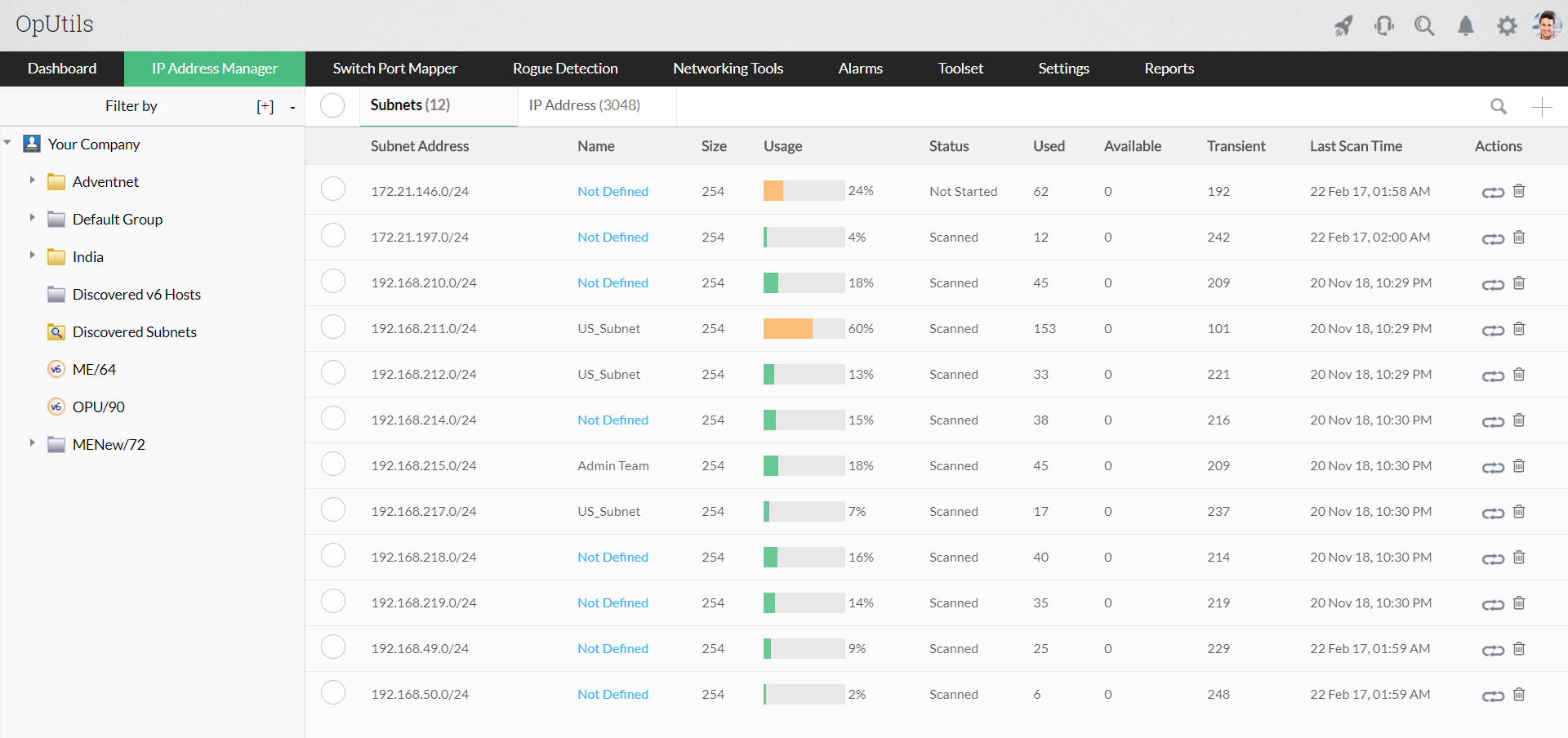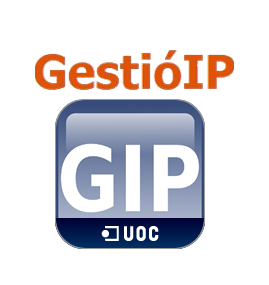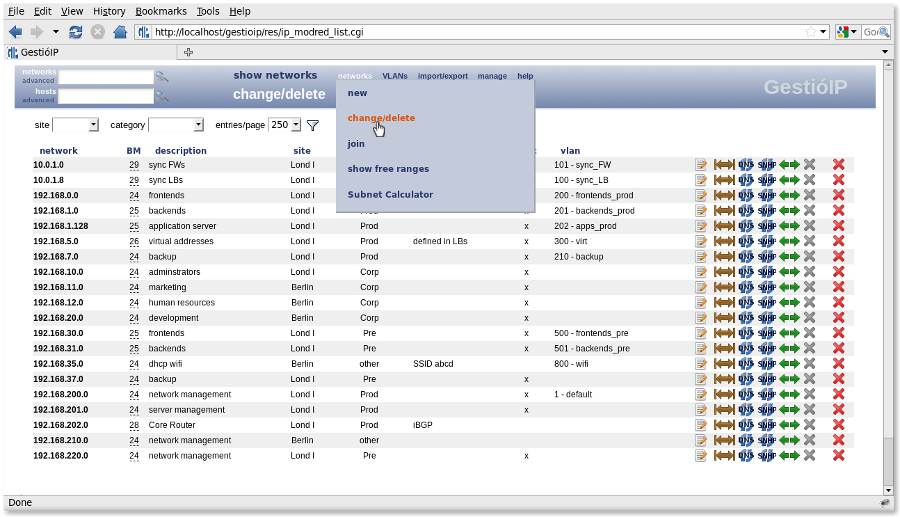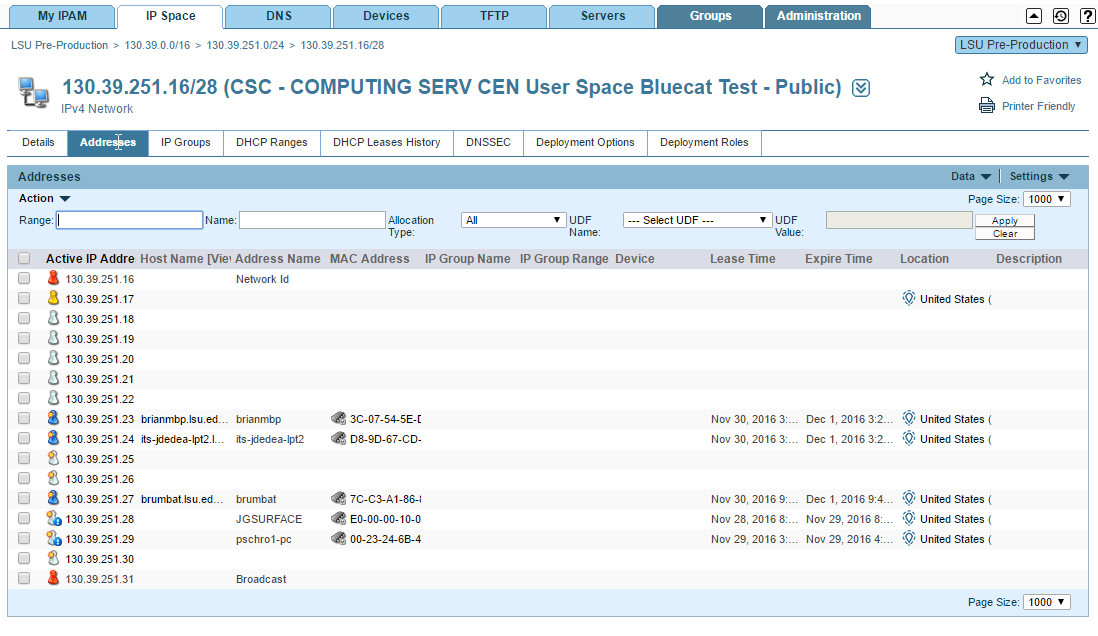You also know that the Domain Name System (DNS) and Dynamic Host Configuration Protocol (DHCP) are the two standards responsible for the allocation of IP addresses to network hosts. The DNS is where the addresses are stored and DHCP handles the allocation. Which is really good news to the network admins because I can only imagine just how much patience and dedication it would take if they had to manually assign IP addresses to all the network devices. A simple error and you end up with a connection nightmare where multiple devices have been assigned the same IP address.
What is IP Management and Why It’s Important
So, where does IP Address management come in? Well, although DNS and DHCP significantly reduce the work of a Network admin, they work as separate entities. None is aware of the activities going on in the other. DHCP cannot tell when the DNS is running out of addresses and the DNS cannot tell which IP address has been assigned to a specific device by the DHCP. Therefore, what an IP Address management software does is to bring these two components together. It provides you with a way to track, plan and manage your network’s IP address space. This way you have complete insight into the DNS. You are knowledgeable about the IP addresses that are in use, those that available and the reserved ones. The IPAM software further enables you to know when IP addresses were allocated, which devices they were allocated and the hostname. And not to forget the automation of the various tasks that take place in your address space such as writing DNS records and the configuration of the DHCP settings. That’s just an overview of the benefits of using an IPAM software. But surprisingly, some businesses are still using traditional methods such as spreadsheets to manage their IP addresses. I understand that this requires zero capital investment but it’s simply not practical. It was hard enough managing networks this way when they were limited to LAN so what about now that we have wireless networks and VoIP adaptation is on the rise? That’s a lot of IP addresses to manage. So now to the main essence of this post. Do you even need an introduction to SolarWinds? I don’t think so. Almost every Network Admin has used a SolarWinds product at some point in their career. Their Network Performance Monitor is arguably the best in the market right now. But today I want to introduce you to their IP Address Management software. An excellent tool that brings together DHCP, DNS, and IP address management into a single interface. This IPAM software actively scans your network to find subnets and their associated address blocks. In the process, it will also identify any abandoned addresses and help you to reclaim them. The tool can further be used to identify key information about the discovered IP addresses such as the associated MAC addresses, the various hosts that have used the address over time. It stores the address data for extensive periods of time in case you ever want to refer to the details in the future. The SolarWinds IPAM also monitors how the IP addresses are being used up and will immediately notify you if there are any issues such as the subnets nearing exhaustion in the DNS or conflicting IPs. It can also identify when there are mismatched DNS entries. Another salient feature about this IP address Management software is the static IP address request. It involves filling a form where you reserve or request that you be allocated a static IP address. This will especially be useful when assigning IPs to servers and other hardware components so that you always know how to reach them. The feature works in conjunction with the automated reporting that tracks the requests to show compliance and also for change management purposes. Finally, this tool has an IP administration feature that enables you to delegate the task of IP management to other network admins. You just need to specify the range of IPs they will be administering. SolarWinds IPAM can run on Windows OS but it can be used to monitor DHCP and DNS servers from multiple vendors. ManageEngine OpUtils is my next recommendation and it is perfect for the management of both IPv4 and IPv6 IP Addresses. It also doubles as a switch port management tool. This IPAM software allows you to scan a particular subnet or all the subnets in your network and consequently determine the status of the IP addresses in these subnets. It will notify you if a particular IP is reserved or available for use. One of my favorite features about OpUtils is that it has been integrated with the Active Directory. This means that it can be used to determine whether a specific IP address represents a computer object in the active directory. If so, then it will go on to collect data about the object such as creation time, last login, and the OS version and name. Additionally, for every IP scanned using this tool you will be able to establish it’s state, DNS name, MAC address, System Name, Device name and additional data such as Switch name, port number, port speed, and port status. You can even add custom fields for user-defined values such as location and telephone number. This IPAM software also allows you to delegate administration roles to other admins. You can either assign them administrator rights where they have complete control over the IP management process. Or you can give them technician rights where they can only see information about the IPs but cannot edit. The tool implements a hierarchical tree view to show the IP addresses which is much easier to track. You can also simplify things further by creating tree nodes to represent location and usage then add the subnets under them. So then whenever anybody wants to find a particular IP they can easily find it based on its usage or location in the network. The logging of historical data is another feature that facilitates easy IP Address management when you use ManageEngine OpUtils.You can establish who an IP address was allocated to during a specific period and the list of all the events performed during that period. Finally, this IPAM software also features an email alert system to notify when the IP address state changes. It will also notify you when there is an issue with the DNS like a lookup fail or if it detects IP address capacity issues. Infoblox is another popular tool that improves the efficiency of IP address management by combining IPAM, DNS, and DHCP in a single interface. It automatically detects new IP addresses and even goes the extra step to scan them for infections using Infoblox DNS Firewall. Infected devices are quarantined. Additional features about this software include the ability to automatically turn IP devices on and off and also to reconfigure connections remotely from a centralized console. Moreover, it has a DHCP fingerprinting feature that facilitates troubleshooting of network problems by profiling specific IP addresses. It does this by analyzing all the historical data related to the IP such as the operating system, MAC address and device type. What is a nice software list without one open source software? GestioIP is a web-based and open-source IPAM that can be used in the management of IPv4 and IPv6 addresses. A tool that is free to use and does not use up your system resources. Who would not want that? The tool can automatically discover IP addresses in your network and also includes a powerful search function that you can use to track the IPs specifically or hostnames. It allows you to make queries using the same expressions you would use in an internet search engine like Google. You are thus assured to always find what you are looking for easily and quickly. A point to note, however, is that Open source software are not always the easiest to use. They usually require a lot of configuration before they can be fully integrated into your system. If you are a beginner, it’s best you stick with the other tools we have reviewed above. GestioIP also understands this and so they offer you a commercial alternative. With the paid version, you will have access to support services and a bunch of other extra features. For example, it has an API that enables you to create scripts that allow other applications to integrate with GestioIP. It also has a Configuration Management Module that automates the back and configuration process of your network hosts. If necessary and possible, the support staff will also take care of the software installation which includes setting it up to adapt to your network requirements. Our last tool on the list is the BlueCat IPAM. It’s a tool that automates all the mundane IP Management tasks so that you don’t have to use a spreadsheet anymore. As expected, the tool auto-detect feature that scans your network to find all the associated IP addresses. The IP addresses together with their data are all stored in a single repository for easier management. Unlike most of the other tools, BlueCat IP Address Manager has its own DNS solution that promises resilience, reliability, and scalability. BlueCat promises a seamless DNS migration process. So you don’t have to worry about address duplication or any data getting left behind. They also have a secure and highly available DHCP solution that offers support for dual-stacked IPv4 and IPv6 environments. BlueCat can be deployed anywhere on your network. Whether it’s with network hosts, virtual machines like VMware and KVM or even the public cloud. The tool has a relatively easy to use interface and it will be perfect for enterprise environments where the DNS and IP configurations need to be updated constantly and rapidly. The tool supports the delegation of management roles and provides multiple ways to control the access of the other admins.
SolarWinds IP Address Tracker: Free IP Address Tracking Software Review5 Best Address Book Software for Windows 10How to Manage and Request IP Address Requests in IP Address ManagerHow to Scan your Local and Remote Subnets for MAC address, DNS, Network Card…

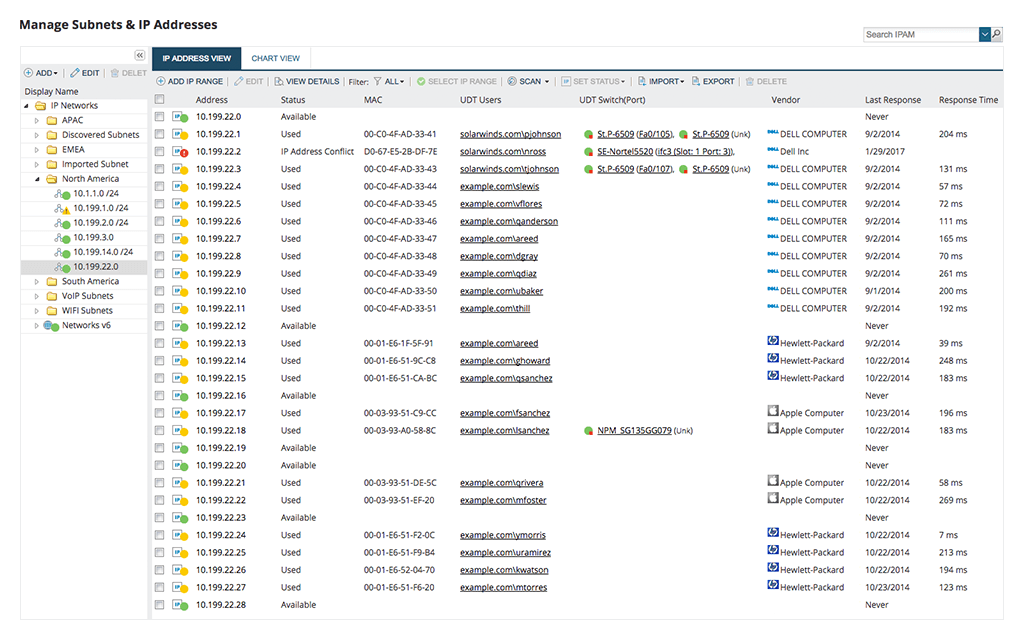
![]()

